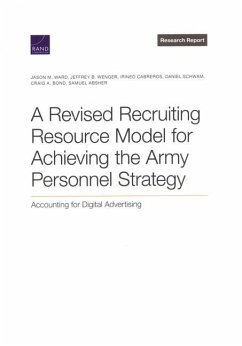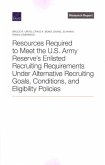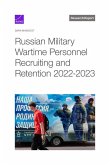The U.S. Army uses a variety of resources and tools to achieve its recruiting mission each year. In this report, the authors present results from an updated version of RAND Corporation's Recruiting Resource Model (RRM), a multipart statistical model that explores how trade-offs between key recruiting resources (bonuses, advertising, and recruiters) affect the Army's ability to achieve recruiting goals and the cost of doing so. They use the RRM to analyze the mix and level of resources required to meet the recruiting mission under alternative recruiting environments and recruit eligibility policies. The RRM was updated to include more recent data to analyze the relationship between resource inputs and recruiting outcomes while incorporating the use of digital advertising, which has become an increasingly important recruiting resource in recent years. Consistent with previous iterations of the model, the results indicate that television advertising and, to a lesser extent, recruiters have positive associations with contract production and that these inputs are relatively more cost-effective than bonuses. This research can help inform how the Army might move resources in a variety of recruiting environments. Making marginal changes along these lines in a purposeful manner over time--either broadly or at a more local level (as might be done in an experimental setting)--would be an appropriate first step in implementing the recommendations that arose from this research.
Bitte wählen Sie Ihr Anliegen aus.
Rechnungen
Retourenschein anfordern
Bestellstatus
Storno








